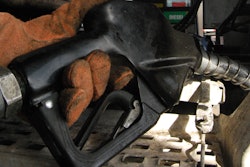
In today’s world of $4 diesel, spec’ing a 600-horsepower engine demands a business case in which the requirement for power and torque is an absolute necessity – usually heavy-haul or some vocational applications. Otherwise, it’s a vanity purchase for those with money to burn.
Meanwhile, today’s modern technology has enabled engines of both sizes to deliver relatively high horsepower and torque while turning in fuel economy numbers unachievable a decade ago.
Why 13-liter engines rule the market
The trend toward bigger engines peaked around 2008 or 2009. Among Overdrive readers polled in 2008, those with model year 1995 or older trucks had engines averaging 12.7 liters. Those with 2001 or newer had engines averaging 13.9 liters. The fall of 2008 saw diesel prices spike above $5 a gallon in California, and the industry has been more fuel-sensitive ever since.
In more recent years, 13-liter engines have emerged as the favorite spec for new heavy-duty trucks. More of Kenworth’s line-haul customers are switching to 13 liters because of weight reduction and fuel economy, says Kevin Baney, chief engineer for Kenworth Trucks.
“With our Paccar 13-liter MX engines today, we can offer them 385 horsepower all the way up to our 500-horsepower Cummins option, which will debut in January,” he says.







